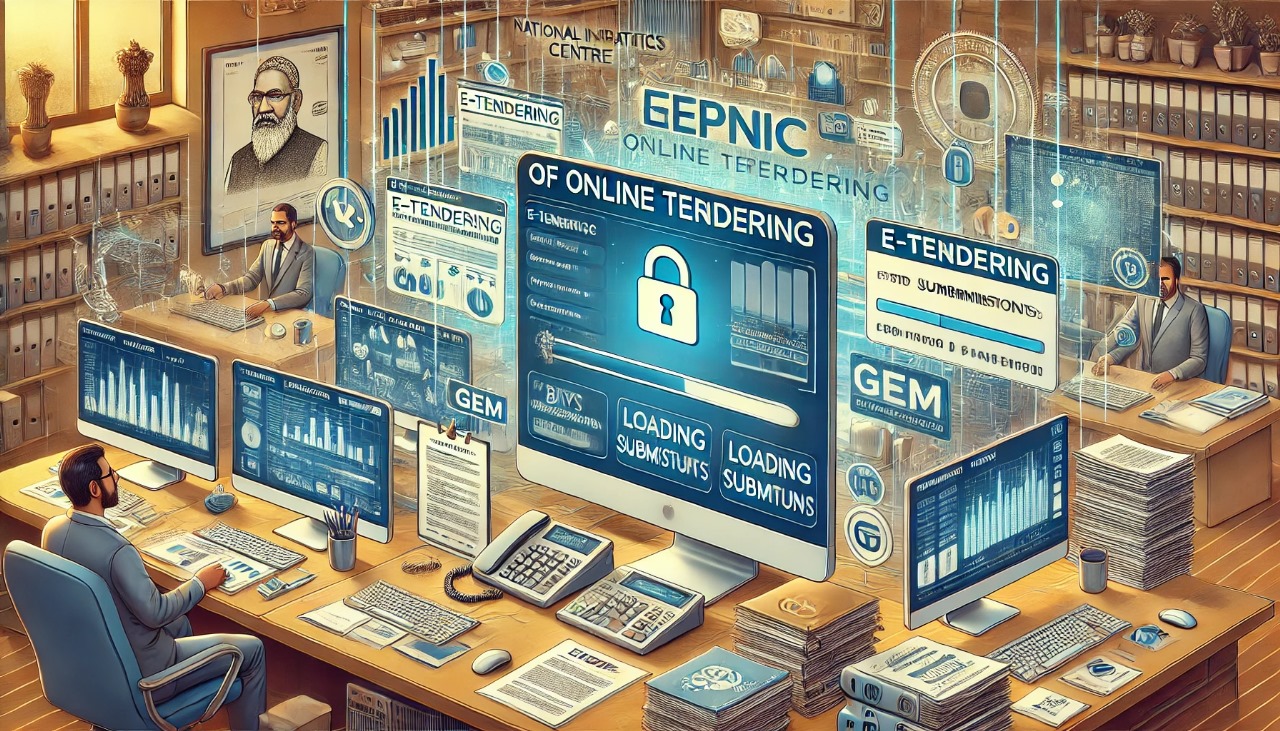
Introduction:
The government agencies in India publish 15000 - 25000 tenders online each day. Towards the end of the year (i.e., January - March), the number of tenders published increases to 20,000+ tenders a day. Most of the tenders published by the government are online tenders or e-Tenders. In e-Tenders, the bidders are required to submit their bids online. There are many e-Tendering portals in India. Among these, the notable portals are the National Informatics Centre’s GEPNIC platform and the Government e-Marketplace (GEM). The NIC platform is used by most of the State governments in India and a few other public sector undertakings and central government agencies as well. Though there are differences from one e-Tendering software to another, there are certain best practices one should follow to ensure submitting the bids successfully. This article explains the best practices each vendor or bidder should take note of while submitting theirs online in the e-Tendering systems. Though this article is written with the Indian audience in mind, the best practices detailed herein are relevant for global audiences as well.
Get registered in the e-Tendering platform well in advance:
The time given for bid submission is in the range of 15-21 days on an average. Once a vendor gets to know about the opportunity, it is important for the vendor to immediately create the user credentials in the e-Tendering platform. There is a tendency among vendors to start the registration process within a day or two of the bid submission deadline. Few e-Tendering systems review and approve the vendor registration application which can take a couple of days. Especially, when the bid submission date is on a Monday, a lot of stress comes in, quite possibly resulting in incomplete submissions or failed bid submissions. Also, it could happen that the e-Tendering system owner would require the vendors to prepare an affidavit confirming their authority to register on behalf of the legal entity they represent. The preparation of such affidavits should ideally be done well in advance. Also, in recent years, e-Tendering systems are interlinked with multiple external IT systems such as the tax authority (PAN database) and company registration (Ministry of Corporate Affairs). It could happen that the link between the e-Tendering system and one or more of the external IT systems is temporarily broken due to which the vendor is unable to submit its application form. For the reasons listed above, it is advised that the vendors should register in an e-Tendering platform well in advance.
 Get your Desktop Ready:
Get your Desktop Ready:
Many e-Tendering systems require custom settings to be incorporated into the desktop or client machine used by the vendors to submit their bids. These settings get complex when the bids are digitally signed or encrypted using digital signature. The reason for such complexity is due to the fact that the private key used for decryption can't be transported to the server. Hence, the decryption of bids happens in the client software using the browser software. The browser software designers on the other hand have designed their software to disallow the browser from acting on files stored in the desktop machines. Hence, the default browser settings are not suitable for applying digital signature on the client side. A few changes will need to be made to dilute the security settings to allow the browser to perform some actions on the client side. Typically, activex controls or java software is used to perform these actions. It takes time to learn about these settings and get them suitably modified. Further, a correct version of the java software must be installed. Besides that, many e-Tendering systems use a special software to enable the browsers to read the keys stored in e-Tokens more reliably. Many versions of these tools exist, from which the correct version of the tool specific to the e-Tendering software must be installed. When many versions of the same software are installed, the client machine does not work properly due to which bid submission does not get activated. It must be noted that the certificate installed within a token is protected by a password, which the end user must recollect. Otherwise, the token cannot be used. Though the e-Tendering systems have taken many precautions to minimize the desktop requirements and to educate the end users about the actions they need to take, any effort by the bidders a few hours or minutes before the bid submission would cause preventable stress. Hence, it is recommended that the bidders ready and test their client machines well in advance.
 Make the required payments in advance:
Make the required payments in advance:
Usually, the bidders are required to pay a tender fee and Earnest Money Deposit (EMD). Most of the systems allow the bidders to pay the tender fee using an online payment gateway either via a credit card or a net banking facility. In online payments, the reconciliation is instantaneous after which the e-Tendering system allows the bidder to either initiate the bid submission or submit its bid online. However, occasionally the link between the e-Tendering system and the payment gateway breaks in which case the payment transaction fails causing delays in the bid submission activity. The issue is all the more challenging when the payment could not be successfully completed due to the problems associated with the bidder’s bank. When the issue is on the bidders’ side, the government is unlikely to extend the bid submission due date. In recent years, the bidders are given the option to submit their EMD using National Electronic Fund Transfer (NEFT) / Real Time Gross Settlement (RTGS) methods. Both NEFT / RTGS are account to account fund transfer methods, in which there is a latency in fund transfer. Further, the principal bank representing the government to which the fund is transferred, will need to confirm receipt of the payment using an electronic scroll uploaded into the e-Tendering system periodically. Thus there are two layers of latency: one is inter-bank and the other from the principal bank to the e-Tendering system. Due to the above listed reasons, one of the first things a bidder must do after it decides to submit its bid for a tender, is to make the required payments well in advance.
Load the bids to the extent it is ready:
There is a tendency among the bidders to prepare all the files in their computer and upload the bid all at once at the end. Since this tendency is prevalent among all the bidders, the e-Tendering system tends to be overloaded around the bid submission deadline. Many bidders attempt to upload files at the same time causing the system to slow down. Hence, it is recommended that the bidder initiates the online bid submission quite early and uploads the ready files as and when they are ready. It is best to upload these files late in the evening when the e-Tendering system is relatively free. The technical proposal and the price bid data, the bidder can load into the system closer to the bid submission due date. Nowadays, the e-Tendering software allows partial saving of bids. But do remember that unless a bid is in submitted status, the government will not be able to open and consider the bids for evaluation.
Submit the bids well in advance:
Many bidders tend to submit their bid a minute or two before the bid submission deadline. There are many reasons for this: overconfidence in the IT capabilities of the bidder, procrastination (i.e., delaying the work until the last minute), not trusting the security systems in the e-Tendering system. Especially on the trust, one can rest assured that the e-Tendering systems which are STQC or security audit certified can be considered as safe. Especially, when asymmetric key encryption is used, the possibility of the system getting hacked is quite minimal. Also, in the last two decades since the e-Tendering systems were originally developed, they have matured quite a bit. Consequently, the bidders can trust the e-Tendering systems and submit their bids in advance without worry. Those who are not that IT savvy tend to submit their bids well in advance and usually the IT experts tend to be overconfident and fail to submit the bid at the last minute. Failing to upload the bid online in time is certainly not a good experience. Further, submitting claims against the e-Tendering system will cause distress to all parties involved and the decision is usually not in the favor of the bidder.
Conclusion:
All the points explained above highlight the need for the bidder to start the online bid submission process well in advance. The earlier the bid submission is started, the sooner the bidder is likely to know about the issues it needs to resolve to submit the bids. Submitting a bid online is a satisfactory experience. It does feel good when the system generates a bid reference number and confirms that the bid is submitted successfully. Hope, this article enables you to experience this satisfaction and minimizes failed bid submissions.